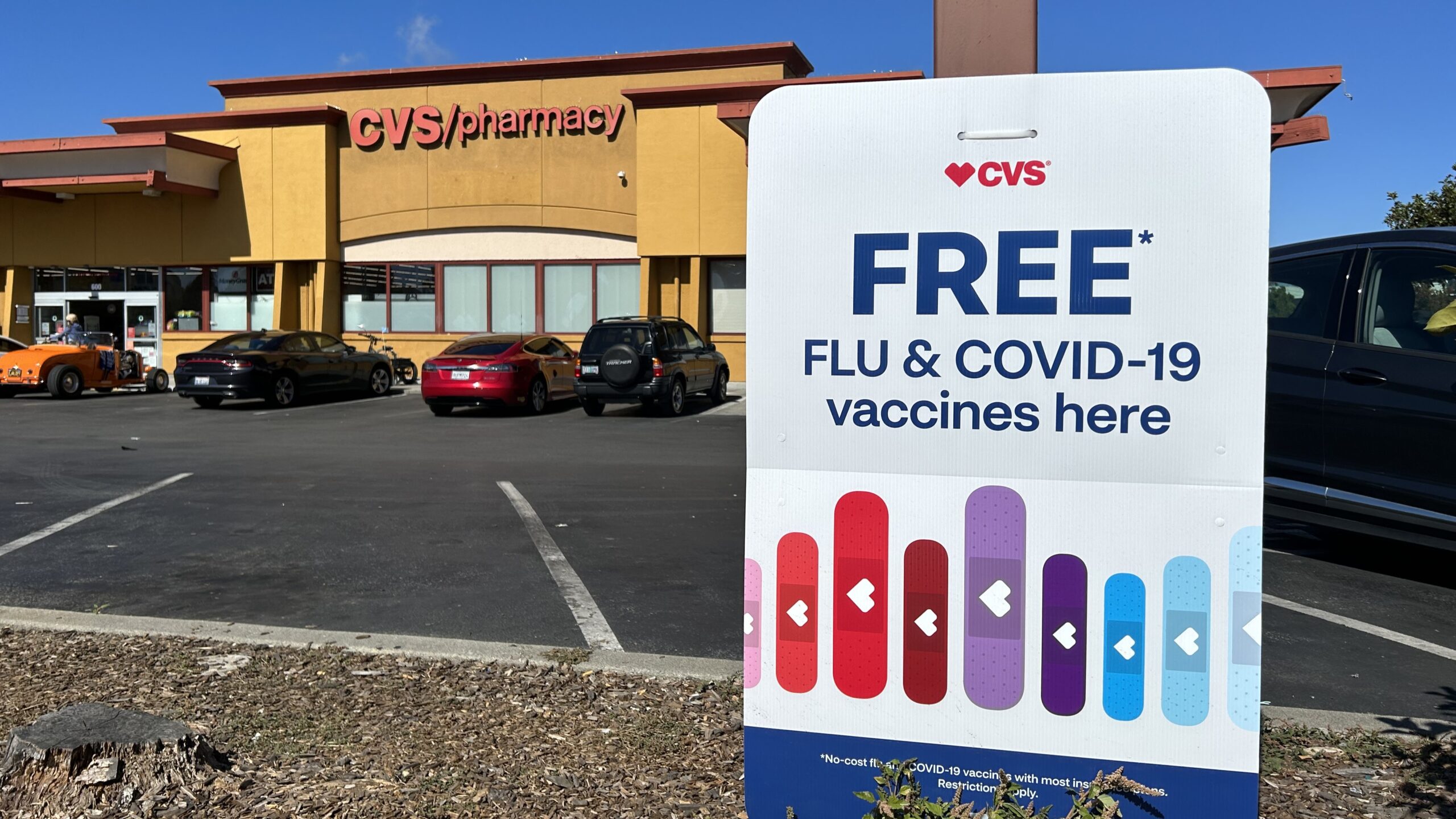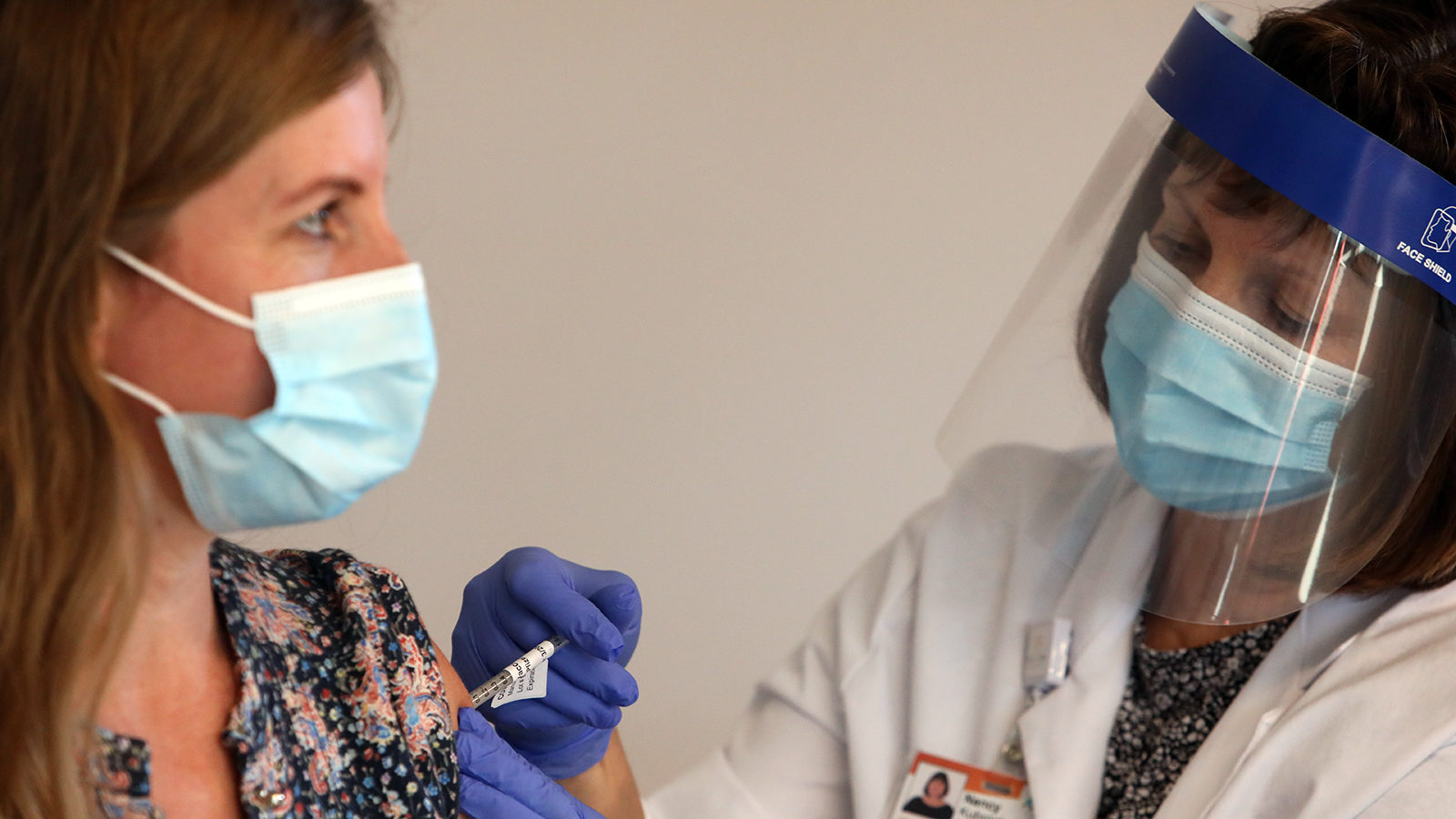
CVS Pharmacy at 600 Front St. in Santa Cruz has updated COVID-19 booster shots and flu vaccine. (Allison Gasparini — Santa Cruz Local)
Last updated: October 2023
COVID-19 vaccine information
About 29.5% of Santa Cruz County residents are up to date with the COVID vaccine, according to Oct. 1 state data.
Primary care providers, health clinics, pharmacies and some supermarkets offer COVID and influenza vaccines in Santa Cruz County. View the County of Santa Cruz’s list of COVID vaccine sites or find detailed information below.
Read updated guidance on COVID boosters for children from the Centers for Disease Control and Prevention.
Where to get COVID and flu vaccines
Concerns from readers about equitable access

Marika Riggs, an intensive care unit nurse at Dominican Hospital, receives a COVID-19 vaccine dose in December 2020. (Shmuel Thaler — Santa Cruz Sentinel)
Questions or comments? Email [email protected]. Santa Cruz Local is supported by members, major donors, sponsors and grants for the general support of our newsroom. Our news judgments are made independently and not on the basis of donor support. Learn more about Santa Cruz Local and how we are funded.
